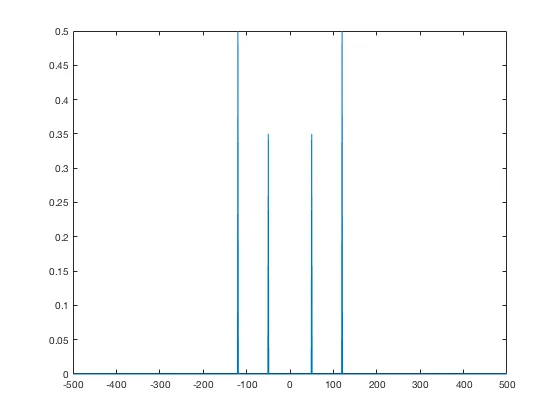我刚刚阅读了Matlab教程的示例,试图学习FFT函数。
有人能告诉我为什么在最后一步中P1(2:end-1) = 2*P1(2:end-1)。在我看来,没有必要乘以2。
Fs = 1000; % Sampling frequency
T = 1/Fs; % Sampling period
L = 1000; % Length of signal
t = (0:L-1)*T; % Time vector
%--------
S = 0.7*sin(2*pi*50*t) + sin(2*pi*120*t);
%---------
X = S + 2*randn(size(t));
%---------
plot(1000*t(1:50),X(1:50))
title('Signal Corrupted with Zero-Mean Random Noise')
xlabel('t (milliseconds)')
ylabel('X(t)')
Y = fft(X);
P2 = abs(Y/L);
P1 = P2(1:L/2+1);
P1(2:end-1) = 2*P1(2:end-1);
f = Fs*(0:(L/2))/L;
plot(f,P1)
title('Single-Sided Amplitude Spectrum of X(t)')
xlabel('f (Hz)')
ylabel('|P1(f)|')
Y = fft(S);
P2 = abs(Y/L);
P1 = P2(1:L/2+1);
P1(2:end-1) = 2*P1(2:end-1);
plot(f,P1)
title('Single-Sided Amplitude Spectrum of S(t)')
xlabel('f (Hz)')
ylabel('|P1(f)|')

400Hz。这与预期的50Hz和120Hz完全不同。在Matlab中,频率向量的定义非常糟糕,为f = Fs/L*[0:(L/2-1),-L/2:-1]。 - lucianopaz